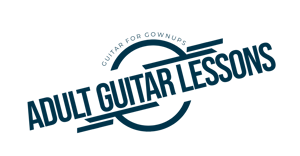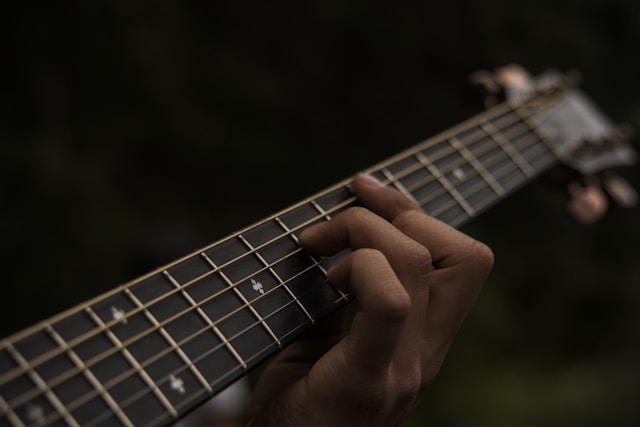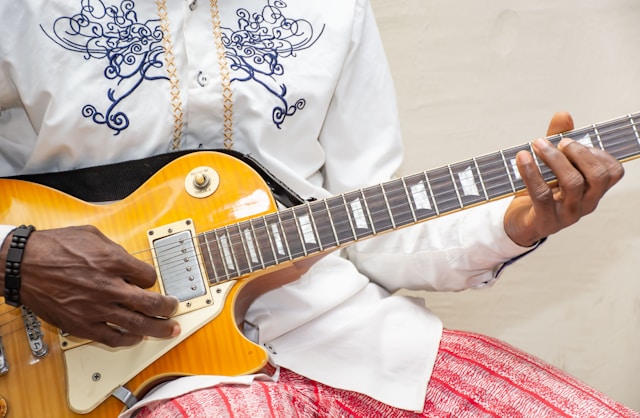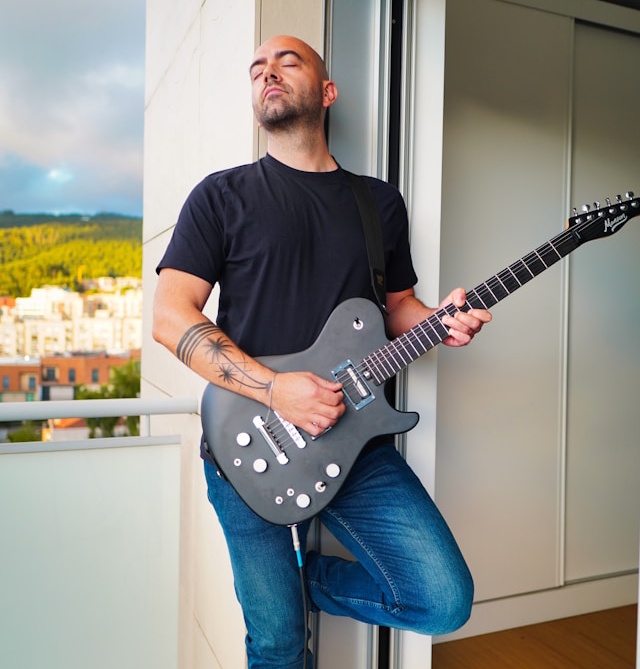Moving Beyond Open Chords
Most beginning guitar students get started by learning the main open chords. The open E, G, D, C and so on. Throw in a few minor and 7th variations, and you’re well on your way.
After overcoming the normal obstacles of teaching uncooperative fingers to twist and writhe into unfamiliar contortions, and of course the requisite stinging soreness of the rubbed raw virgin flesh on the finger tips – the new guitar student typically learns to become proficient in mastering the basic chords fairly early in the game.
For many, a particularly challenging chord in the early days is the F chord played in the open position. I can still recall my struggles with the F chord, back over some thirty odd years ago.
Much of the challenge of the F chord has to do with the fact that you have to press down on two strings with one finger. We are, in essence, experiencing our first exposure to a “barre” chord, of sorts, by having to use our first finger to simultaneously play the two notes on the first fret of the first and second strings.
Then, a little later in our guitar playing journey, we are introduced to the dreaded barre chord.
The first days of attempting to learn barre chords feel kind of like a recent high school graduate on the first day as a freshman in college.
All that confidence that was built up when mastering the open chords, the majors and minors and 7th chords, feeling like an old pro on top of the heap – flies like a rocket out the window when the first stabs are taken at playing barre chords.
The first challenge is to have to re-train our fingers to form some of the chords we thought we already had down pat. We have to figure out how to play the “E” shape and “A” shape barre chords using different fingerings than we learned to play them in the open position.
Then, of course, comes the challenge of taking our first finger and laying it across the fret board to form the “barre”. It feels awkward at first, as the initial scratchy muted notes squeak out.
And, to add insult to injury, we start to feel that old familiar soreness again, only this time it runs the length of the first finger, instead of only on the tip.
But it may be helpful to the guitar student just venturing out to tackle barre chords, that there is a way to play them that will greatly increase your odds of sonic success.
It’s All About Leverage
Beyond all the new and foreign meanderings you have to put your fingers through when first attempting barre chords, you may be surprised to learn that the real secret to successful barre chords lies with the thumb!
In terms of guitar instruction and education there have always been opposing points of view regarding thumb placement when playing guitar.
Many “conventional” training programs espouse keeping the thumb at the back part of the neck when playing. And there is merit to this theory.
Other programs say that wrapping the thumb around the neck when playing is satisfactory. There are merits to this theory as well.
I am personally a firm believer that what is most comfortable for the individual is what’s correct.
Just like a golfer with an unorthodox swing that consistently drives straight down the fairway – many famous guitarists learned to play the “unconventional” way and defied established teaching methods.
However, in the case of barre chords, keeping the thumb at the back of the neck is almost essential.
The added pressure required to play a successful barre chord makes it almost impossible to play one any other way.
When your thumb is placed at the midway point of the back of the guitar neck, it is in a pivotal position. From this position the thumb can act as a “clamp” on the neck when forming a barre chord.
Virtually all the pressure you need to form a barre chord will be produced from the thumb in this “back of neck” position.
As an experiment, pick up your guitar and play an A major barre chord on the fifth fret. Try it first by wrapping your thumb up around the neck.
It’s very difficult from this angle. It feels clumsy and the first finger has a hard time making the “barre”.
Now try it with the thumb on the back of the neck. Can you feel the increase in pressure you have attained by just shifting your thumb position?
So if you are at the initial stages of learning to play barre chords and struggling with getting the proper pressure from your fingers, be aware of the fact that the true success in playing barre chords may very well be in your thumb!





